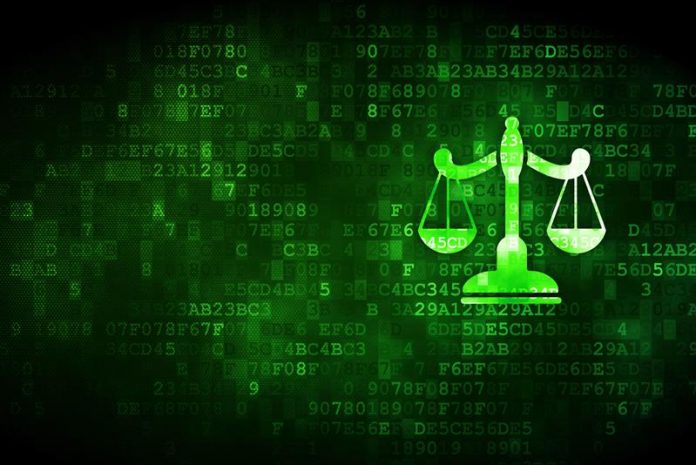This article is written by Pratyusha Ganesh, from Symbiosis Law School, Hyderabad.
Table of Contents
Introduction
The importance of IPRs has dramatically increased during the past three decades with both countries and businesses prioritizing innovation in their policies and strategies.
By helping to establish secure channels for know-how transfer, IP Rights like Patents and Trade secrets are meant to address the externality problem that results in the imperfect approachability of knowledge.[1] By temporarily conferring exclusive rights, Patents in combination with Trade Secrets, permit companies to capture the value of their inventions and investments in developing and scaling them.
IP & Technological Environment
Intellectual Property is only an element of the larger ecosystems and they do not completely promote technological development. It is a part of a larger innovation framework and the pillars of this structure are:
- Research and development;
- Access to capital (private investment, government funding, venture capital);
- Professional services (lawyers, patent attorneys, financial experts etc.);
- IP & enforcement laws;
- Licensing, branding, marketing and distribution.
Green technology means the technology used to encourage sustainability, lower greenhouse gas emissions, or aid in the solution to climate change. Intellectual property rights may have contributed to climate changing technologies but have also spurred the development of green technology.
In the present age, there is greater awareness and need for sustainable and environmentally-friendly practices. After extensive research, it has also come to notice that IP Rights play an important role in mitigating climate change. Where IP Rights may be seen as a valuable tool to assist the development and diffusion of green technology, they could also stand as a barrier to a global effort in mitigating climate change.[2] Hence, it is clearly established that intellectual property rights do have an impact on the development of green technology.
Ever-growing importance of innovation and IPRs
The growth of innovation in the strategies of government and the private sector is the most important development and is considered the key to economic growth. It is also important in addressing crucial global challenges in a wide range of sectors like energy, health and agriculture. The number of Intellectual Property applications have tremendously increased worldwide especially in the area of Patents. While there were only 25,419 applications under the Patent Co-operation Treaty (PCT) overseen by WIPO in 1992, they reached a total of 182,120 PCT applications in 2011.[3] In the modern economy, IPRs, and Patents in particular, have become planned assets for companies seeking to secure market shares and dominate competitors. Especially in the case in the information technology sector, where concerns about the effects of the ongoing ‘patent wars’ on innovation have been voiced.[4]
Setting clear parameters for a structured discussion
Article 7 of the TRIPS Agreement according to which “the protection and enforcement of intellectual property rights should contribute to the promotion of technological innovation and to the transfer and dissemination of technology, to the mutual advantage of producers and users of technological knowledge and in a manner conducive to social and economic welfare, and to a balance of rights and obligations.”[5]
Efforts should be made to amplify the usage of green technologies in the discussions relating to sustainable development and climate change in the framework of existing international rules established by the TRIPS Agreement. Relaxations should be considered an integral part of the balance of rights and obligations in these rules.
Dissemination of information on green technologies
In 2010, WIPO established an IPC Green Inventory which seeks to facilitate searches for green/clean energy patents, which tend to extend to a wide range of industrial sectors.
However, establishing such classification schemes and research tools, as well as undertaking patent landscape studies, is a costly and complex task which involves a wide and diverse set of actors such as governments, IP administrations, the private sector, international and regional organizations and NGOs.[6] There is a need for these actors to work in sync.
IP and Green Technology:
Technological IP
- Patents
- Computer Programs
Non- Technological IP
- Trademark Rights
- Design Rights
- Copyrights
In practice of IP Rights, licensing is not sufficiently used in the field of green technology because:
- Poor experience and expertise in the technical and the patent/licensing field,
- frail infrastructure,
- lack of knowledge concerning patent law, etc. in the recipient country,
- insufficient capital and/or financial support,
- lack of suitably skilled staff,
- favorable market conditions.
Open innovation for sustainability
“Open innovation and open source approaches, as well as other options such as patent commons and IP exchange platforms, have received relatively little attention in policy discussions about efforts to enhance the diffusion of green technologies.”[7]
But in the recent past, there have been some notable strategies in this area such as the Eco-Patent Commons launched by IBM, Nokia, Pitney Bowes and Sony in partnership with the World Business Council for Sustainable Development (WBCSD) in 2008,[8] and the GreenXchange platform launched by Nike and nine other organizations in 2010.[9]
The future initiatives can be bettered by drawing experiences from the above.
Promoting the licensing of green technologies
WIPO Green is a technology marketplace established by WIPO intended to facilitate the accelerated adaptation, adoption and deployment of environmental technologies, particularly in developing countries and emerging economies.[10] Its other benefits include easy access to technology, technical assistance, as well as licensing and financial support.
The WIPO GREEN program focuses at promoting package technology licensing agreements for green technologies in order to increase and improve their usage around the world, principally in developing countries. Information on the available green technologies and the needs of a specific technology are provided to the private and public sector entities through an online platform. Their main aim is to create a global network encouraging partnerships with companies devoted to offer a package constituting important elements like, patent licenses, trade secrets, technical documentation, training programs, etc.
Provisions relating to compulsory licenses are stated in the Paris Convention, TRIPS and national legislations.
- The Paris Convention: Article 5A of the Paris Convention talks about the rules concerning compulsory licenses relating to patents and utility models.
Article 5A (2) identifies the right of each Member State to take legislative measures providing for the permit of compulsory licenses to prevent abuses which might be a result of the exercise of the exclusive rights conferred by the patent.
Article 5A (4) clarifies that a compulsory license may not be granted on the ground of failure to work or insufficient working before the expiration of a period of four years from the filing date or three years from the date of the grant of the patent. The compulsory license shall be non-exclusive and shall not be transferable.[11]
- TRIPS Agreement: Articles 30 and 31 of the TRIPS Agreement grant some exceptions and limitations to the exclusive rights that World Trade Organization Members may issue in their national laws.
Article 30 permits Members to grant limited exceptions to the exclusive rights conferred by a patent, provided that such exceptions do not unreasonably conflict with a normal exploitation of the patent and do not unreasonably prejudice the legitimate interests of the patent owner, taking equally into account the legitimate interests of third parties.[12]
Article 31 provides that a Member may allow uses other than the ones provided under Article 30, without the permission of the rights holder. This covers compulsory licenses in favor of third parties and for government use without the authorization of the right holder. Such use may only be permitted if, prior to such use, the proposed user has made efforts to obtain authorization from the right holder on reasonable commercial terms and conditions and that such efforts have not been successful within a reasonable period of time.[13] This requirement may be relinquished by a Member in the case of a national emergency or other circumstance of extreme urgency or in cases of public non-commercial use.
- National legislations: Many of the industrialized and developing countries have legislation that permits the government and/or third parties to use a patented invention without the authorization of the right holder under certain specific circumstances and conditions. Compulsory licenses are granted against consideration and not for free. As with voluntary licensing, the rights can be implemented after negotiation and the payment of compensation.
Environmental aspects of IP (low carbon future)
Given the need to address climate change on a global scale, it is very important to identify specific patterns of technology to foster development and environmental innovation in developing and emerging economies. The European Commission has set a target for the European Union to be carbon neutral by 2050.[14] One of the most important ways in which countries are progressing towards being carbon neutral is by changing their energy mix to depend more on sustainable and clean energy such as bioenergy, solar and wind, and less on fossil fuels.
Changing to a low-carbon future is a complex and multi-faceted attempt. But we have the collective wisdom, inventiveness and creativity to come up with new, more effective ways to shape a green future and the IP system has an important role to play.
Suggestions
- The new WIPO GREEN program directs at promoting voluntary licensing of green technology packages (including –but not limited to licenses under patents, copyrights and know-how/trade secrets). Therefore, support and assessment are required to determine the extent of its effectiveness in promoting green technology transfer.
- Problems concerning technical difficulties in the climate change context can be solved by incentivizing and supporting collaborations in the research and development field. Research institutions and enterprises from modern countries, emerging economies and developing countries should be included in such collaborations. Treatment of background and foreground IP from such associations should be rightly addressed in agreements between the parties.
Conclusion
There is a desperate need for the world to make a joint effort to lessen greenhouse gas emissions and to mitigate climate change. Green technology is recognized to be the instrument to affect the mitigation. The fact that climate change affects every single person in the world and affects future generations is what differentiates green technology and traditional technology, and warrants special treatment.
IP rights definitely have an impact on the development and diffusion of green technology. The question, however, is whether the impact hinders or facilitates the development of the diffusion of green technology, and, if so, whether the impact demands and warrants taking measures to improve development. As mentioned above, Intellectual property has traditionally been shaped somehow by principles based on morality.[15] The Kyoto Protocol and TRIPS Agreement provide a basis to justify reasonable measures if necessary. [16]
Intellectual property should be seen in a broader context of suitable policies, adequate institutions and human resources to both encourage green innovation and to ensure that its benefits are widely scattered.
References
[1] Global challenges report, Innovation & Diffusion of Green Technologies by Kristina M. Lybecker & Sebastian Lohse.
[2] See Russell Thomson & Elizabeth Webster, The Role of Intellectual Property Rights in Addressing Climate Change: The Case of Agriculture, 2 WORLD INTELL. PROP. ORG. J. 133, 133 (2010).
[3] http://www.wipo.int/ipstats/en/statistics/pct/.
[4] Patent wars: The curse of innovation (16 May 2012) by Richard Waters.
[5] Article 7 of the TRIPS Agreement.
[6] Developing and Diffusing Green Technologies: The Impact of Intellectual Property Rights and their Justification by Jonathan M.W.W. Chu.
[7] The role of open innovation models and IPRs in technology transfer in the context of climate change mitigation by Krishna Ravi Srinivas, 2011.
[8] Hall, Bronwyn H. and Helmers, A study of Patent Thickets (July 18, 2014).
[9] Open innovation for Sustainability: Lessons from the GreenXchange Experience, Policy Brief No. 13; ICTSD, Switzerland.
[10] https://www3.wipo.int/wipogreen-database/.
[11] Article 5 A (4) of the Paris Convention.
[12] Article 30 of the TRIPS Agreement.
[13] Article 31 of the Trips Agreement.
[14] European Commission reports.
[15] General MORAL RIGHTS, supra note 120 (explaining that intellectual property rights are, and have previously been, highly influenced by notions of morality).
[16] Kyoto Protocol, supra note 1, at art. 13 4(c); TRIPS Agreement, supra note 39.
LawSikho has created a telegram group for exchanging legal knowledge, referrals and various opportunities. You can click on this link and join:
 Serato DJ Crack 2025Serato DJ PRO Crack
Serato DJ Crack 2025Serato DJ PRO Crack











 Allow notifications
Allow notifications



